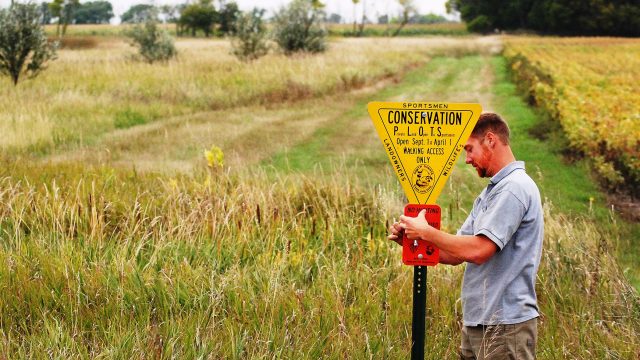Doug Leier: Game & Fish Department Relies Heavily On Temporary Workers

Like a lot of people my age and older, my early impression of a wildlife professional was the Marlon Perkins/Jim Fowler “Wild Kingdom” type who millions of people got to see working directly with wild animals in exotic places.
At age 18, in my first summer of field work for the U.S. Fish and Wildlife Service, I quickly learned that what I had seen on TV was not reality. Sure, I had some fun like dragging grass fields looking for duck nests, and counting breeding ducks in spring, but I also recall stringing miles of barbed wire and pounding posts for days on end – and by myself much of the time.
Fixing fence, replacing and repairing signs, and removing piles of debris from public property were not exactly what I envisioned when I signed up for a career in wildlife management.
With schools back in session and hunting seasons starting to roll, I think of the seasonal workers, many of them students, who do this kind of work for the North Dakota Game and Fish Department and other agencies during the summer months.
The Game and Department has not quite 160 full-time employees, so the agency relies heavily on another 50 or so seasonal, temporary workers who put in thousands of hard hours each year, and it’s not just putting up signs.
In the Bismarck office temporary employee give educational tours and presentations, and there are others who help enter data from tens of thousands of deer, turkey and antelope applications in preparation for lottery drawings.
Summer fisheries workers help maintain or improve boat access at North Dakota’s many fishing waters. Others help with lake surveys, which sounds kind of fun until you spend the better part of a 90-degree day detaching hundreds of small bullheads or perch from a survey net.
As you drive across the prairies this fall – or any time of year for that matter – you’ll see an array of signs that indicate public land, or private land opened to hunting access through the Game and Fish Department’s PLOTS program. The signs are necessary so hunters can first find the land, and then know where the boundaries are so they don’t accidentally stray onto adjacent private land.
Between state-owned or managed fishing access areas, wildlife management areas, and land in the PLOTS program, Game and Fish needs to maintain hundreds of miles of fence, and thousands of boundary or regulatory signs. It just wouldn’t be possible to keep up with that without seasonal employees.
Most hunters and anglers probably don’t think about signs and fences much. But they probably do notice if they aren’t properly maintained. People would be confused about boundaries, or where to park, or any special rules for certain areas. Fences keep out livestock from adjoining lands, and keep vehicles from damaging valuable habitat.
It’s been awhile since I pounded posts and fixed fence, but I’d be lying if I said I don’t miss it once in awhile. Because of that kind of field work, I also had opportunities to observe a baby duck hatching out of an egg, witness a new-born deer’s clumsy first steps, and develop camaraderie and friendship through cleaning out an old boundary fence.
This fall, when you hunt public lands, or launch a boat for fishing or other recreational purpose, it’s likely a seasonal worker helped make it possible. While the work may not have been as glamorous as they’d have imagined, it’s just as important.




